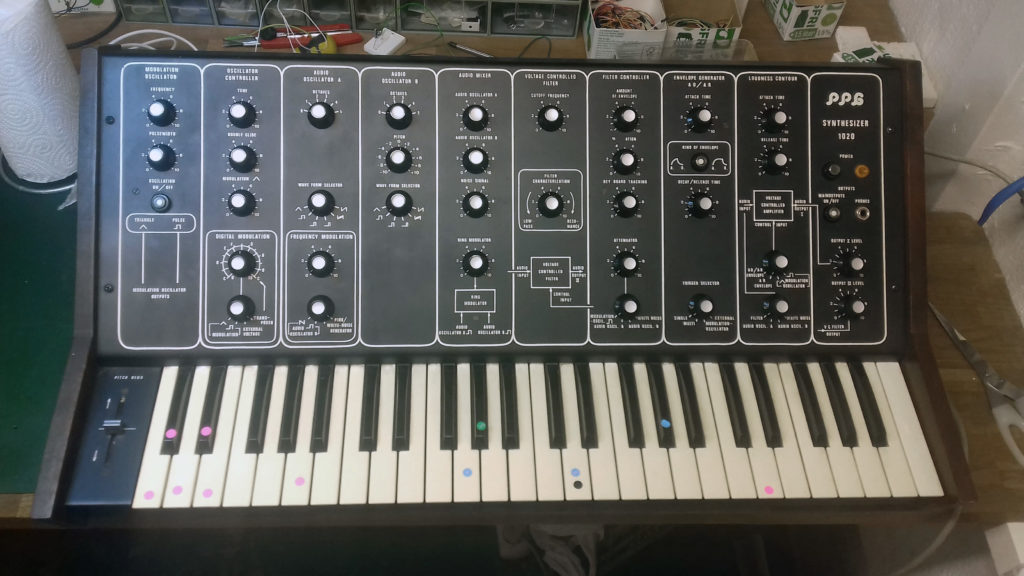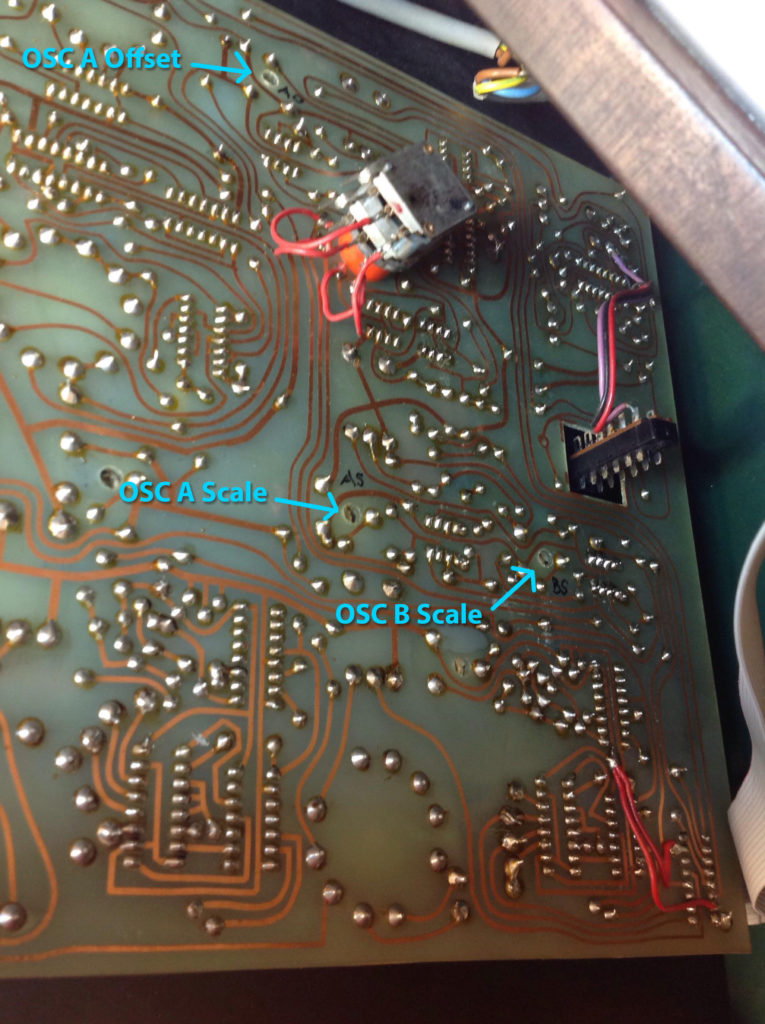Disclaimer: I have no idea. Maybe this can be done better. But here’s my best shot.

Background
There is not much technical information around about this very rare synth. In order to figure out how to tune it, I had to remove the front plate which is a lot of work. This article is an attempt to save you from that.
The specimen I got to the workshop was close to a prototype. I don’t if the numerous modifications and extra installments were factory-made, or done later. The PSU is part of the main PCB, except for the transformer, so it’s not immediately apparent what is what. There is trimmer for +12 volt, and it was easy to get it very exact. There’s no trimmer for -12 however, and it was around -10.5 volts, don’t know if that’s within specs, but it seems a bit far off.
Thanks to Stefan Huebner I knew that the oscillator control voltage is part digital and part analog: The octave is selected digitally, and the voltages within an octave are analog. This means that if you notice that F1 key, for example, is off by 20 cents, then every F is going to be off by 20 cents. But some other note, say all D keys, could be in tune.
The problem
The two oscillators had the same pitch on some notes, but where off by almost a quarter-note on others. The behavior repeated for each octave. Which exact notes where in tune could be adjusted with the OSC B PITCH knob.
Some tuning info
On an analog synthesizer, there’s traditionally one Offset trimmer (VR), and one Scale VR for the Lin-to-Exponential Converter for an oscillator. The circuit assumes that the input is a fairly exact linear 1 v / octave voltage. I found Scale VR and Offset VR for OSC A, and a Scale VR for OSC B.

It was not possible to adjust the OSC A Offset enough to get it in tune, probably due to one of these reasons:
- The negative supply was only -10.5 v
- Some modification to the PCB has broken the voltage supplied to the lin-exp converter
- I misunderstood how the TUNE knob is supposed to work. Maybe it’s more like the Sequential Pro-One, where the oscillator is in tune when the knob is at zero. I assumed that the “neutral” setting would be in the middle of the knob range, which is 5. Otherwise it would not be possible for the user to tune the synth if it is too sharp.
Tuning the PPG 1020
Oscillator A
OSCILLATOR CONTROLLER / TUNE = 5, turn down OSC B, all modulation off, OUTPUT I LEVEL = 0, OUTPUT II LEVEL = 10
- Press any G key, for example G2
- Use OSC A Offset VR to get correct pitch for G2. If not possible, adjust the OSCILLATOR CONTROLLER / TUNE knob
- Press G#2
- Use OSC A Scale VR to get correct pitch for G#2
- Repeat 1-4 until both G2 and G#2 are in tune
This is the way to get the best pitch overall. On my synth about half of the keys within the octave were in perfect pitch, while others were flat or sharp by up to 10 cents.
Oscillator B
Turn up OSB B in the mixer. You’ll hear some beating between OSC A and OSC B when playing notes.
- Press G2
- Use OSCILLATOR B; PITCH knob to get zero beating
- Press G#2
- Use OSC B Scale VR to get zero beating
- Repeat 1-4 until there’s no beating
You will notice that even if one key, say D#, is off by +8 cents, it’s exactly the same for both oscillators, so at least there’s no beating.
That’s it! Thanks for listening